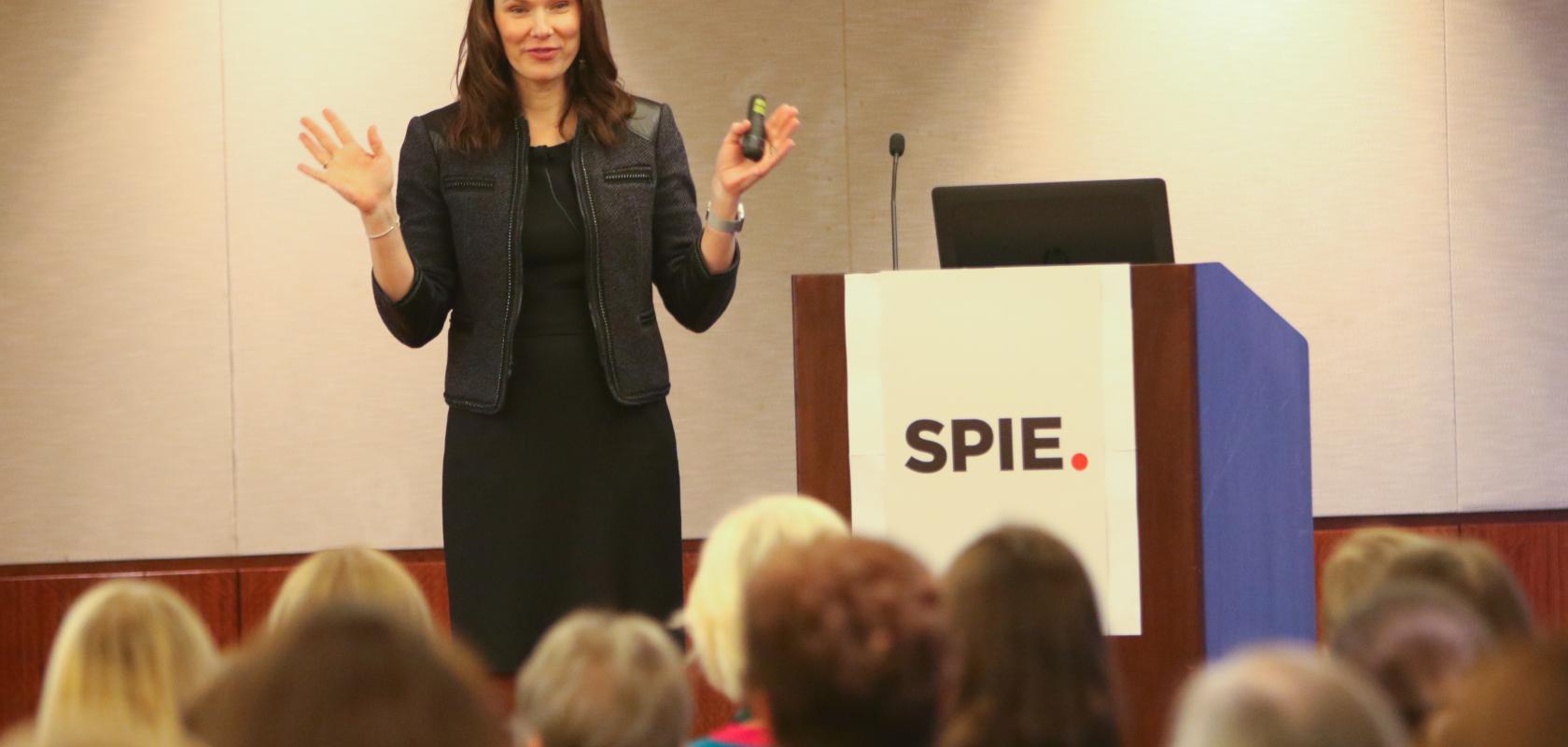![]()
The photonics cluster in Rochester, New York, alone requires 550 more optics technicians every year. Professor Alexis Vogt discusses initiatives to help meet this demand, and suggests other ways to tackle the global optics skills shortage
After working in the optics industry for nearly a decade, I made the decision to lead the precision optics programme at Monroe Community College in Rochester, New York, because I was concerned about the tremendous shortage of technicians across the industry. Now, I work to help address that shortage.
I received my PhD in optics from the Institute of Optics at the University of Rochester and joined the optics industry right after graduate school. I worked first at Bausch + Lomb designing contact lenses, and then as a product manager at Melles Griot, part of Idex Health & Science.
Five years ago, I assumed the role of endowed chair and associate professor of optics at Monroe Community College. When I first took the position, I thought the shortage of technicians was isolated to Rochester. I quickly learned that is not the case at all – in fact, it’s a global issue. And the reason it’s an issue is that optics technicians are a critical part of creation, innovation, and supply chains in the optics field, a field that’s expanding rapidly and impacting a growing number of sciences, technologies and products revolutionising our daily lives.
Consider this: without optics and photonics, we wouldn’t have smartphones or the internet or fibre optics. There would be no lasers or scanners or backup cameras. We wouldn’t be able to scan our groceries at the grocery store. The optics-necessary list goes on and on! Some of the exciting advances in areas such as biomedical applications, food security, and sustainable energy technologies are optics- and light-enabled.
But we need more technicians to help advance the field, to contribute to the innovations that optics allows us to create and implement. Usually, it’s the person with a bachelor’s or master’s or PhD degree in optics who sits in front of the computer and does the design work, but it’s the technician who takes that design and makes it a reality. The technician is the one who is working with their hands to manufacture the optics and to test the optics. Whether it’s a single lens or a camera lens system, a laser or a fibre-optic cable, all these products need optics technicians to use their hands to both manufacture and test the products.
About 97 per cent of the optics technician job openings in our area alone go unfilled every year
Optics technicians primarily work with their hands, so artists, musicians, gamers, chefs, automobile mechanics, and bicycle mechanics can all make excellent optics technicians. That also makes someone considering a career change just as eligible as a 17-year-old student.
Monroe Community College is currently the only community college in the world awarding associate degrees in precision optics. At Monroe Community College, using a grant from the National Science Foundation, we created a proactive targeted programme, the ‘Optics & Photonics Technology INnovation’ programme, or OPT IN!, as it’s known.
It not only strengthens the optics and photonics workforce and provides students with relevant employment opportunities, it includes outreach efforts to underrepresented populations in optics, including women, individuals from minority groups, and those from low-income backgrounds. As in the rest of STEM-related professions, it’s important for us to build a diverse and inclusive pipeline of optics technicians.
We also recently received a $4.4m grant from the Office of Naval Research for our Defence Engineering Education Program in Optics (Deep OPS). This will help us increase the national optics workforce through innovative training programmes, including a nationwide precision optics manufacturing apprenticeship, to prepare students for high-demand jobs that support the Department of Defence. During its initial three-year period, this programme will impact a minimum of 3,000 high school students, college students, apprentices, and incumbent workers, and will provide professional development to high-school teachers and college faculty. In addition, Deep OPS will establish 150 apprenticeships and 30 industry sponsors to help build greater community awareness of these career opportunities.
Vogt teaching her Introduction to Optics course at Photonics West 2020. Credit: SPIE
At Monroe Community College, our programme is growing, but far from sufficient to fill the demand for optics technicians. In the Finger Lakes region of New York, where we are based – home to the Rochester Regional Photonics Cluster – we estimate a need for more than 550 optics technicians every year. Last year, our programme graduated 20 technicians, so about 97 per cent of the optics technician job openings just in this area go unfilled every year. We will need 550 next year, and the year after that, and the year after that, and so on. When you think of all of New York or all of the United States or the rest of the world, where there is also a vast shortage of optics technicians – and couple that with the number of experienced technicians approaching their retirement age – that creates an even greater hole for us to fill. In the Finger Lakes, Monroe Community College projects an estimated 33 per cent of technicians are approaching retirement. We’re working not only to train technicians for the Rochester area, but for national and international markets.
The critical takeaways are that optics technician jobs are available, we just need to cultivate more optics technicians. That’s the best part about my work: all my students find jobs – and rewarding careers! The progression within a career is really remarkable for an optics technician. There are so many areas an optics technician can grow and add great value to an optics firm.
As educators, we need to get the word out that this is an exciting field and one that is building a diverse workforce. We all love the devices that are optics-enabled, but many people do not recognise that there’s an optics field dedicated toward them. We need to get the word out to young students, their parents, their guidance counselors, to high school communities and STEM-related student chapters, to make them aware of this wonderful career worth pursuing, a career that requires their skills.


